Hands On With the Nexus 5X and 6P
by Brandon Chester on September 29, 2015 4:05 PM EST- Posted in
- Smartphones
- Mobile
- Nexus
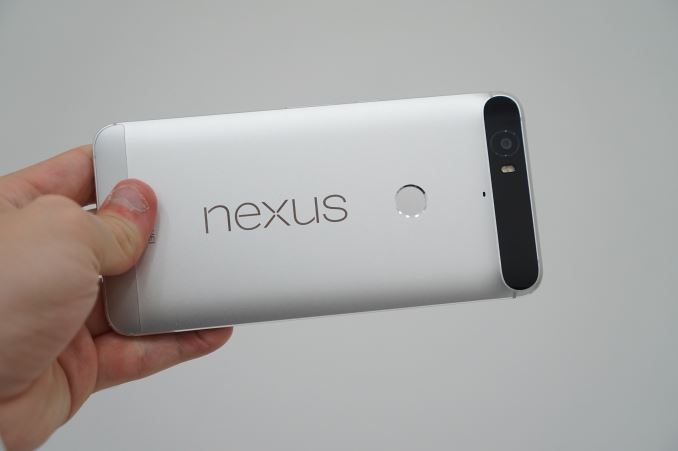
Today Google announced several new devices at their September 2015 launch event in San Francisco. By far the most anticipated devices were the two new Nexus phones that were announced. The first is the Nexus 5X made by LG, a successor to the Nexus 5 which was released nearly two years ago in late 2013. The second is the Nexus 6P, which is made by Huawei and replaces the existing Nexus 6 made by Motorola. Both of these phones bring significant improvements over their predecessors, particularly the Nexus 5X which can take advantage of all the advancements made in the past two years. Below you can see the specifications for each of these new devices along with the specs of their predecessors to see how they compare.
| Google Nexus Smartphones | ||||
| LG Nexus 5 | LG Nexus 5X | Motorola Nexus 6 | Huawei Nexus 6P | |
| SoC | Snapdragon 800 | Snapdragon 808 | Snapdragon 805 | Snapdragon 810 |
| GPU | Adreno 330 | Adreno 418 | Adreno 420 | Adreno 430 |
| RAM | 2GB LPDDR3 | 3GB LPDDR3 | 3GB LPDDR4 | |
| Display | 5.0-inch 1920 x1080 IPS LCD | 5.2-inch 1920 x 1080 IPS LCD | 5.96-inch 2560 x 1440 AMOLED | 5.7-inch 2560 x 1440 AMOLED |
| Wireless | 1x1 802.11a/b/g/n/ac BT 4.2, NFC | 2x2 802.11a/b/g/n/ac BT 4.2, NFC | ||
| Storage | 16/32GB | 32/64GB | 32/64/128GB | |
| I/O | microUSB, 3.5mm audio | USB Type-C, 3.5mm audio | microUSB, 3.5mm audio | USB Type-C, 3.5mm audio |
| Size / Mass | 137.84 x 69.17 x 8.59mm, 130g | 147.0 x 72.6 x 7.9 mm, 136 grams | 159.26 x 82.98 x 10.06mm, 184g | 159.3 x 77.8 x 7.3mm, 178 grams |
| Battery | 2300 mAh (8.74Wh) | 2700mAh (10.26Wh) | 3220 mAh (12.236Wh) | 3450mAh (13.11Wh) |
| Camera | Rear Facing 8MP, 1/3.2", (Sony IMX179), F/2.4 Front Facing 1.3MP |
Rear Facing 12.3MP with 1.55µm pixels, F/2.0 Front Facing 5MP, F/2.0, 1.4µm |
Rear Facing 13MP, 1/3.06" (Sony IMX214), F/2.0. Front Facing 2.1MP |
Rear Facing 12.3MP with 1.55µm pixels, F/2.0 Front Facing 8MP, F/2.0, 1.4µm |
| SIM | MicroSIM | NanoSIM | ||
| Launch Price | $349 (16GB) | $379 (16GB) | $649 (32GB) | $499 (32GB) |
The Nexus 5X is similar to the Nexus 5 in some ways but different in others. The chassis is noticably thinner, although the camera protrudes a fairly significant amount. The device has gotten larger in the other dimensions as a result of its larger display. However, it's not that much larger, and during my time with it I never felt that it was difficult to hold. The SoC moves from Qualcomm's Snapdragon 800 to Snapdragon 808, with the amount of RAM and internal NAND remaining the same. The battery capacity receives a significant bump, going from 8.74Wh to 10.26Wh. As for the camera, it's greatly improved. The Nexus 5 was never known for having an amazing camera, and with these new Nexus phones Google appears to have implemented a custom camera sensor. It's a 12.3MP sensor with 1.55 micron pixels, which roughly equates to a 1/2.3" sensor format.
The back of the Nexus 5X feels similar to the material used in the black Nexus 5. There's also a blue model and a white model, and while I didn't get to try the white model the blue version seemed to have the same texture as the black one. The design of the phone diverges significantly from the appearance of the Nexus 5. There's no more raised black ring around the camera, which makes the current Nexus 9 a bit of a loner as it's the only device left that has that design accent. The camera has also been moved to the center of the back, while on the Nexus 5 it was situated in the upper corner. Something worth noting is that the Nexus 5X and 6P both lack OIS, something that existed on their predecessors. Google's rationale is that you won't need long exposures as the camera sensor and pixel size is large enough to work well without it. Whether or not that is true remains to be seen, but OIS is still a useful feature and I think many users who are hoping to upgrade from an existing Nexus smartphone will be sad to see it gone.
On the software side, Android Marshmallow has a significantly improved camera app. Google has addressed many of the issues with menus and settings being difficult to find, and I also noticed that the camera preview frame rate on the Nexus 5X and 6P was much higher than on the Nexus 5 and 6.
Below the camera is Google's new fingerprint sensor. According to Google it can recognize a finger in under 600ms and has a very low error rate. It's difficult to say how it compares to other devices, and I wasn't able to get time to use it, so that will have to wait for when we actually review the Nexus 5X. The position on the back seems to be well chosen, and because it also will wake up the phone it doesn't suffer from the issue with some early rear-mounted fingerprint scanners which is that you had to wake the device first.
As for the front of the phone, there's not a whole lot to say. It's dominated by the display, with the earpiece on the top and a single speaker on the bottom and a front-facing camera to the left of the top speaker. The display itself seemed very good, and the color rendition looked similar to the Nexus 5 which is a good sign. While the Nexus 6P has an AMOLED display, the Nexus 5X is an IPS LCD.
Next is the Huawei-made Nexus 6P. Every aspect of the device feels like a large improvement over the Nexus 6. The first thing that stood out to me is the size. The Nexus 6 was extremely large and I couldn't hold it properly in really any circumstance. The Nexus 6P takes a step back to a 5.7" display, and the dimensions of the phone itself are not much larger than the iPhone 6s Plus despite the larger screen. Of course, you end up losing some real estate to the on screen buttons while the iPhone has a physical home button, but the point is that the phone is much easier to hold and use than the Nexus 6 was. The thickness also contributes to this as well, as the Nexus 6P is almost 3mm thinner than the Nexus 6.
Beyond the dimensions, the construction and feel of the phone is miles ahead of the Nexus 6. It's an aluminum unibody construction with a diamond cut edge edge, and the primarily plastic construction of the Nexus 6 isn't even remotely comparable. It's also fairly light considering the aluminum build and its size.
Something worth noting is that Google seems to have given Huawei and LG a lot of freedom when designing these new phones. The Nexus 5X doesn't share many visual characteristics with the 6P apart from the Nexus logo on the back and the fingerprint scanner. Rather than mounting the camera in the middle, Huawei has put it in the upper left corner like the old Nexus 5 did. The entire top of the back also has a slightly raised black bar. I'm honestly not a fan of this, as it just interrupts what should be a continuous aluminum surface.
Like the Nexus 5X, there's not a whole lot to say about the front of the Nexus 6P. It has stereo speakers, a front-facing camera, and a large display. The 6P bumps the front camera resolution up to 8MP from the 5X's 5MP, with a corresponding increase in sensor size to maintain the 1.4 micron pixel size.
The display is the part of the Nexus 6P that I was most curious about. The Nexus 5 was notable for having a very accurate display despite its low price, and with the Nexus 7 also having accurate calibration it was hoped that Google would continue this across all of their products. Unfortunately, the Nexus 6 shipped with a very poorly calibrated AMOLED display with low brightness. When I first used the Nexus 6P I was very upset to see that it was clearly oversaturated like the Nexus 6, but there's more to the story this time around. In the Nexus 6P's developer settings there is a switch to enable an sRGB mode, and when this switch is turned on the Nexus 6P's display appears to have similar color rendition to the Nexus 5X which is a very good sign. While we'll need to get a review unit in order to analyze all of the display's attributes, I am hopeful that Google has recognized and fixed the issues with the Nexus 6's display in the Nexus 6P.
On the top of the Nexus 6P you'll find a 3.5mm audio jack, whereas you'll have to move to the bottom to find it on the Nexus 5X. However what you won't find on the bottom of either Nexus phone is a USB Micro-B port; Google has decided to be forward looking, and like the Chromebook Pixel the new Nexus smartphones use the USB Type-C connector for data and charging. While this will come with some pain in the short run as users won't be able to use existing USB Micro-B cords, I think the benefits are worth it.
Both new Nexus devices also come with the new Android Sensor Hub. This essentially refers to the different sensors that the devices include, and how they are now controlled and managed by a dedicated processor rather than the device's application processor. This is important for features like Doze in Android Marshmallow, as it allows Google to use minimal power to check the status of sensors and determine whether or not to go into deep sleep.
For me personally, the Nexus 5X is the most interesting of Google's two new Nexus phones. I always like to see what vendors can do when they're targeting a price far less than that of a flagship smartphone. The Nexus 6P definitely has its appeal too though, and we'll be running both of them through our standard suite of tests in order to see how they compare to the competition. If you're already convinced that you want the Nexus 5X or 6P you can pre-order them online now from the Google Store so long as you live in the US, UK, Canada, Japan, or Ireland. The Nexus 5X starts at $379 and comes in black, white, and blue, while the Nexus 6P starts at $499 and comes in standard aluminum, white, and black.


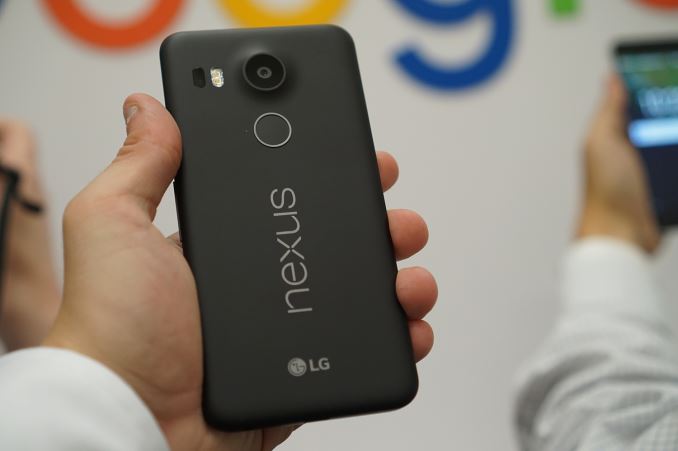
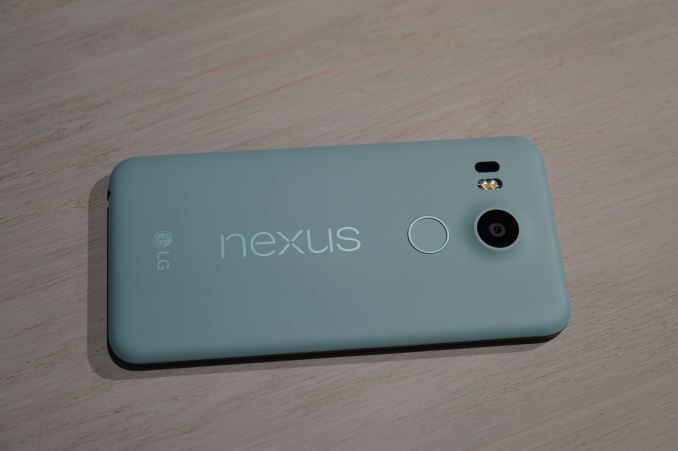

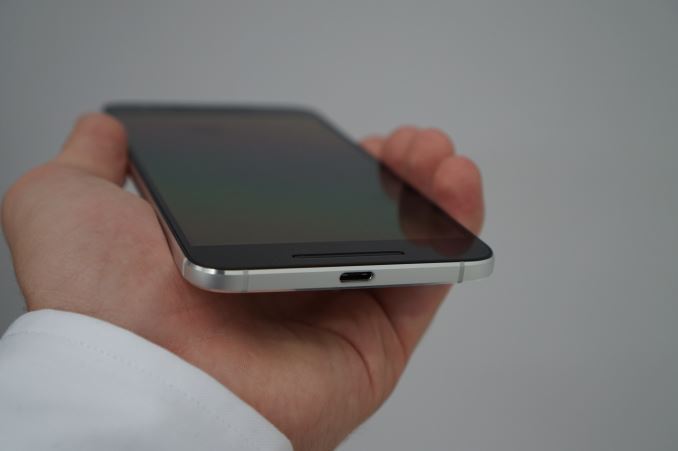
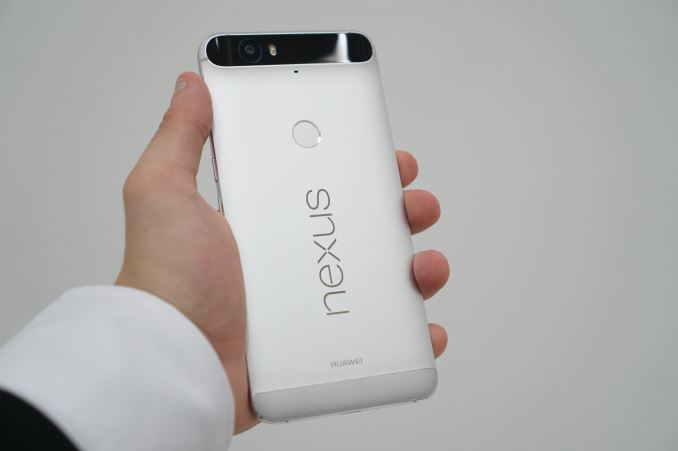
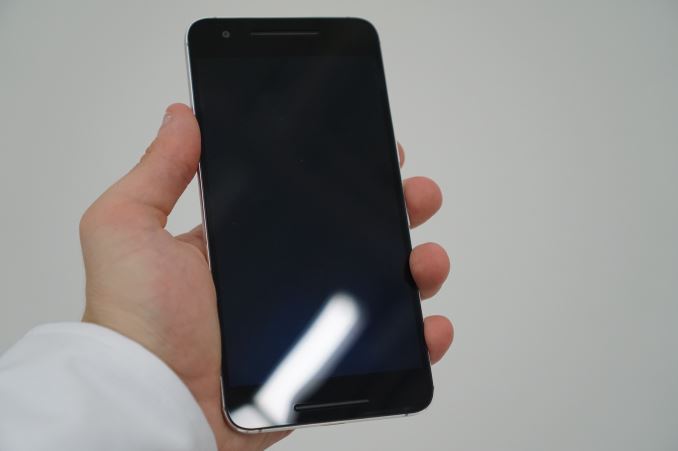
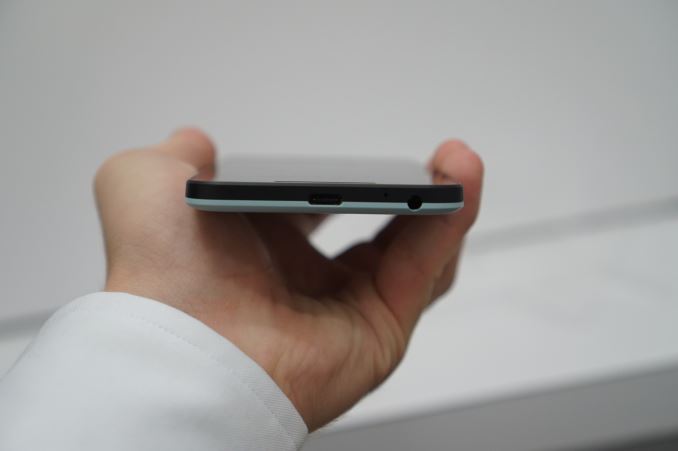








116 Comments
View All Comments
misiu_mp - Thursday, October 1, 2015 - link
You are wrong on pixel size not being important.Just think about it, if you made a single pixel light sensor the size of a whole image sensor, you would expect, I hope, that it would be much more accurate than any of the tiny pixel sensors on the multi megapixel chip.
Because of the larger area, the pixel will be able to gather many more photons (i.e. signal) for given light intensity, greatly improving signal to noise ratio (thermal noise is independent of pixel size).
gg555 - Thursday, October 1, 2015 - link
Unfortunately, that is completely wrong. I don't know why this is so hard to get. Even your own incorrect comments contain within them the logic that should allow you to get it.If you have a sensor that is say 1 inch square (which would be a very large senor) and it is exactly 1 pixel (which of course would reproduce nothing with that resolution, but anyway) it will capture the same amout of light as a 1 inch square sensor that has two, or ten, or one hundred, or 12.3 megapixels. You have the same amount of light over the same 1 inch square sensor, you have just broken it up into more or less pixels, for the sake of achieving a certain level of resolution.
It's the physical size (i.e. surface area) of the sensor that determines how much light falls on it, not how many pixels you happen to have broken it up into.
Pixels do affect things like noise and resolution. And for complicated reasons having to do with the optics of a sensor (the lenses), not with the sensor size, there is a sweet spot for pixel size for a given sensor. You can have both too many pixels and not enough. Without enough, you cannot resolve enough detail (in the case of the one pixel sensor you would have no detail, just a single pixel that's some color, which would create an image that's just one even color and nothing else). But with too many pixels, you increase the noise in the image and reduce color accuracy.
Most sensors these days in phones have too many pixels (16 MP, 20 MP) for their sensor size. So they will have more noise and less color accuracy. But you can go too far the other way also. Like HTC's "ultrapixel" fiasco. Then you just give up resolution and don't gain anything.
So there is a good reason for the 6P to have "only" 12.3 MP. But the reason is not low light performance. That is entirely influenced by the physical size of the sensor, not the size of the pixels.
But obviously this is too complicated for consumers (and some commenters here) to understand, so it's simpler to just say we made the pixels big for better low light performance, even though it's not true and is the larger 1/2.3 sensor, not the larger pixels, that will cause better low light performance. Clearly Google felt like they needed to explain why there's only 12.3 MP when other phones have 16 MP and 20 MP. And no one would understand the real reason. So they just made some nonsense up.
Boltd - Friday, October 2, 2015 - link
You're partially right and partially wrong. Take a look at a mirror. Ignore your ugly self. Now imagine that mirror breaking up into a grid of individual pieces. Same amount of light, right? Now imagine that those individual pieces shrink but the overall size of the mirror remains the same. So now there's a gap between individual pixels. That light is not captured. Only the light where the individual pieces are.gg555 - Wednesday, October 7, 2015 - link
It's a nice idea. It's also a completely made up idea and does not reflect how sensors actually work. The spaces between the pixels effect noise, but not low light performance. And the noise doesn't have to do with light that's not captured, it has to do with effects of the electronics in the sensor itself.Boltd - Thursday, October 8, 2015 - link
Not made up, it's physics. Per a given area, there is a finite amount of energy in the form of photons. Anyway, I was responding to your statement that what matters is the overall surface area of the chip vs individual pixels. Both do - whether it is a greater number of pixels to increase the overall surface area of exposure to photons or larger pixels. Exposure in terms of aperture size and shutter speed determines how much many photons (in terms of power) hits the pixels. Individual pixels that are larger have more surface area to collect photons. Physics.Noise that you see in pictures come from the signal from each individual pixel - from degradation of performance mostly due to heat from amplification of the signal. Smaller pixels collect less light and the signal to noise ratio is lower. Less signal means greater amplification and amplified noisy signal is bad.
I do agree that this is only part of the equation, there are so many other factors - from the AR coating of the filters, the signal path from each pixel, the amplifier/processing design, even software determining which pixel is exhibiting noise vs a true signal. In the end, it doesn't matter much other than the result.
Bottom line though is that you are wrong about your assertion that the individual size of the pixel doesn't matter about the light collection.
kliph - Tuesday, September 29, 2015 - link
"On the bottom of the Nexus 5X and Nexus 6P you'll find a 3.5mm audio jack" - The 6P has it on top.oaf_king - Wednesday, September 30, 2015 - link
Isn't the Nexus 6P's Snapdragon 810 the troubled chip killing Qualcomm? I was getting excited for that nice big battery but I believe 810 is on 20nm, while Apple/Samsung are on 14nm aka 30% more efficient chip, and not one rife with throttling issues. Hope that's old news tho.. but gonna have to wait to see some benches for suremisiu_mp - Thursday, October 1, 2015 - link
I don't know if 6P's 810 is 20nm or 16nm but even just because the feature size on a chip is 30% smaller does not mean it is 30% more efficient.Laxaa - Wednesday, September 30, 2015 - link
Man, the Nexus 5X is shaping up to be a dissappointment.I can live with the 2GB of RAM and the 32GB of storage(albeit a little low), but the lack of OIS, wireless charging and only a single front facing speaker(even though it has two speaker grills) are dealbreakers for me. I'd reckon Google wants people to upgrade to the larger and more premium 6P.
gg555 - Wednesday, September 30, 2015 - link
Of course, the 6P also lacks OIS and wireless charging. And it has that fugly camera hump (I've looked at a lot of hands on articles and I have yet to find a single person who thinks it looks good). And of course there's the Snapdragon 810 with all it's overheating issues. (Some are claiming this is v2.1, so the problem has been solved, but not really. ArsTechnica looked into it a bit. It's just throttled so it doesn't overheat. Meaning it's performance is not that great.)My conclusion is that Google wants to put in enough good features to attract people and pretend that they have made "flagship" phones, but really the phones are just a showcase for pure Android and a device for developers to work with. Google always seems to fall short somehow (except the original Nexus One, that really was as standout phone at the time).